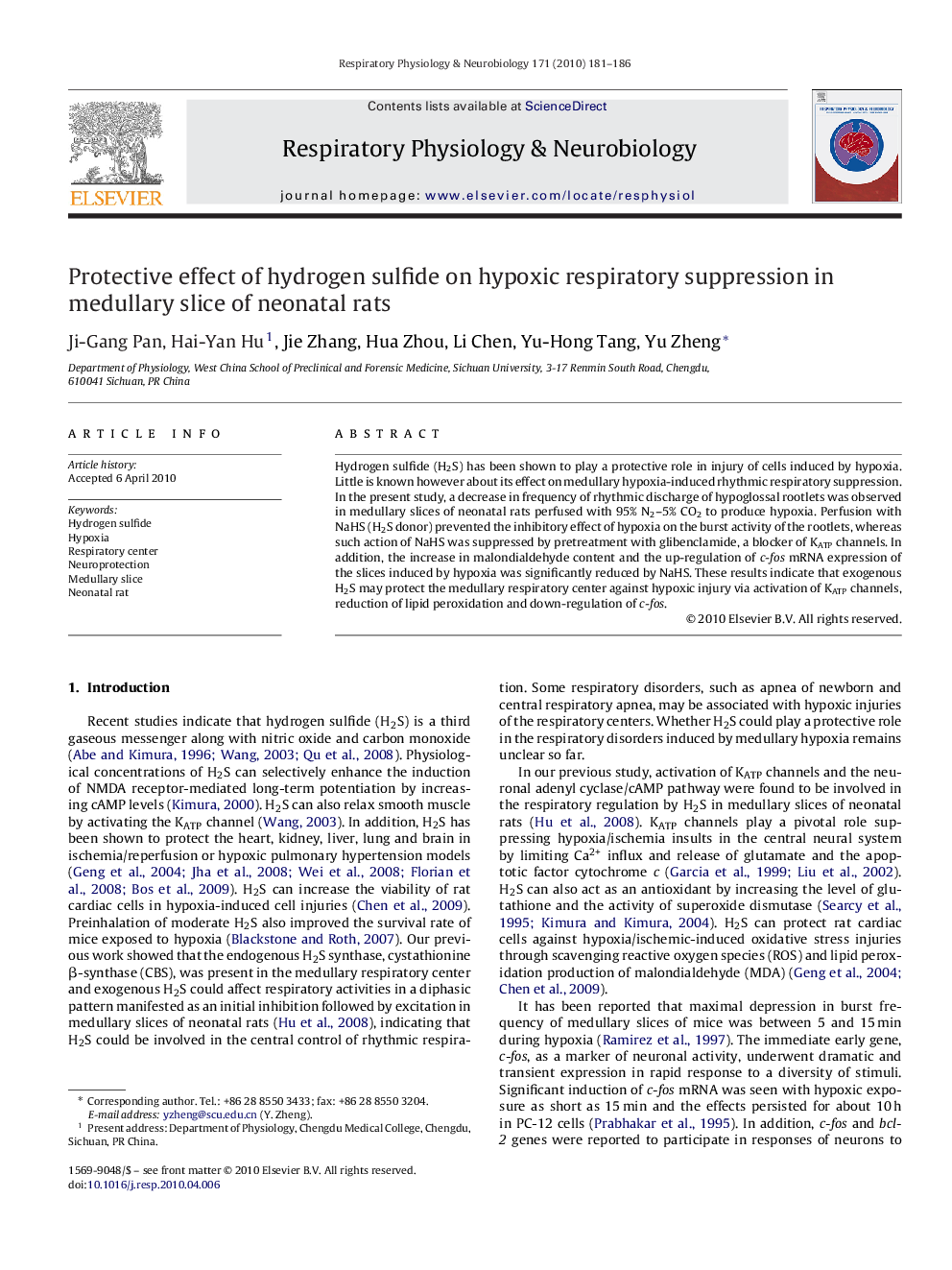| Article ID | Journal | Published Year | Pages | File Type |
|---|---|---|---|---|
| 2847679 | Respiratory Physiology & Neurobiology | 2010 | 6 Pages |
Hydrogen sulfide (H2S) has been shown to play a protective role in injury of cells induced by hypoxia. Little is known however about its effect on medullary hypoxia-induced rhythmic respiratory suppression. In the present study, a decrease in frequency of rhythmic discharge of hypoglossal rootlets was observed in medullary slices of neonatal rats perfused with 95% N2–5% CO2 to produce hypoxia. Perfusion with NaHS (H2S donor) prevented the inhibitory effect of hypoxia on the burst activity of the rootlets, whereas such action of NaHS was suppressed by pretreatment with glibenclamide, a blocker of KATP channels. In addition, the increase in malondialdehyde content and the up-regulation of c-fos mRNA expression of the slices induced by hypoxia was significantly reduced by NaHS. These results indicate that exogenous H2S may protect the medullary respiratory center against hypoxic injury via activation of KATP channels, reduction of lipid peroxidation and down-regulation of c-fos.
